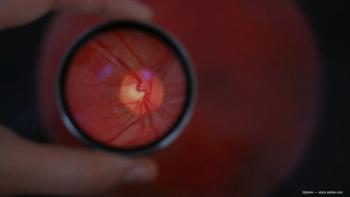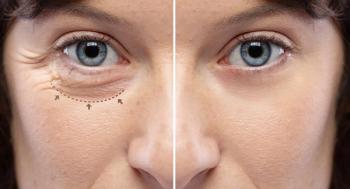
Laser system offers multiple treatments in single device
New laser technology in a single device offers multiple treatment platforms, including SLT for glaucoma, laser vitreolysis for floaters, capsulotomy, and iridotomy.
Reviewed by Inder Paul Singh, MD
A new laser system (Tango Reflex, Ellex) combines specialized Nd:YAG vitreolysis settings for floaters with settings for trabeculoplasty, capsulotomy and iridotomy in one unit.
“It’s an exciting time because for so long floaters have been ignored,” said Inder Paul Singh, MD, a glaucoma specialist at the Eye Centers of Racine and Kenosha, WI. “And it is one of the most common patient complaints I see in my office.”
In its YAG mode, the platform delivers a truncated ultra-Gaussian energy beam that can vaporize floaters with less energy and it uses a coaxial illumination configuration to maximize visualization of the floaters, Dr. Singh said.
Although some clinicians fear that a higher dose of energy will cause damage to nearby structures in the eye, in fact dispersion of energy does not increase in proportion to the increase in intensity, he said.
“I realized early on how much of a misperception some people have about the physics behind the YAG laser,” Dr. Singh said.
For example, 1 mJ of laser energy disperses in a convergence zone of 100 µm, while the convergence zone of 5 mJ is 150 µm.
In addition, the platform features a truncated the energy beam. Since it has a sharper rise and fall, 30%-40% less energy is needed to treat floaters when compared to standard lasers. It can vaporize floaters at 3 to 4 mJ, but Dr. Singh said he often uses settings in the 5-6 mJ range.
Dr. Singh uses 200 to 800 shots per floater depending on the size and density of the floater. Since the laser delivers a 4-nanosecond pulse, the energy dissipates before the next shot is fired, therefore preventing a build up of energy.
Coaxial illumination
The Tango Reflex also situates the slit lamp light, aiming beam, and laser all on the same optical pathway. This allows the clinician to more effectively visualize posterior floaters in relationship to the retina, Dr. Singh said.
By contrast, the light source on most lasers is inferior, superior, or to one side of the laser.
The coaxial position allows for a red reflex and maximizes visualization of floaters in the middle and posterior vitreous, he said.
Without this coaxial illumination, it is not possible to identify many of the symptomatic floaters and more importantly, provide spatial context with the retina, he explained.
“If the floater is in focus and the retina is in focus, that tells me it is not okay to fire,” he said. “If the floater is in focus and the retina is not, that tells me it is okay to fire.”
The clinician can also fire with the slit lamp off-axis.
“When the slit lamp is in the oblique position, it gives us an understanding of where the floater is in relation to the posterior capsule,” Dr. Singh said. “You lose the red reflex and thus the floaters appear white behind a black background.”
Because the illumination level provided with Reflex Technology is adjustable, it is possible to precisely titrate the amount of coaxial illumination as needed, Dr. Singh said.
For example, a floater in the middle-to-posterior vitreous requires use of coaxial illumination for spatial context with the retina.
However, if a surgeon finds the lighting too bright and the floater gets lost in the red reflex, it is possible to incrementally adjust the amount of coaxial illumination by slowly moving the slit lamp into the oblique position. This can be done until the perfect level of lighting needed to maximize the contrast of the floater, yet keep the spatial context in relation to the retina, is achieved.
Other innovations
A third advantage of the platform over some other lasers is that the light source is a light-emitting diode instead of a halogen globe.
“That allows for fewer and less intense back reflections for the doctor,” Dr. Singh said. “Another benefit is that the light runs cool and can be left on indefinitely without warming the environment and putting strain on surrounding components.”
The platform uses a green aiming beam for YAG treatments, which improves contrast sensitivity and visualization against the red reflex of the retina, and differentiates from the red aiming beam of the SLT mode, Dr. Singh said.
The increased possibilities with vitreolysis have awakened interest in treating floaters, with a new international floater society, the International Ophthalmic Floater Society, launched at the 2016 meeting of the European Society of Cataract and Refractive Surgeons, Dr. Singh said.
This group has begun work on classifying floaters, developing standardized protocols, and creating a customized floater questionnaire. Their goal is to raise awareness and push technology forward in this space.
Until now, clinicians have often dismissed patient’s complaints about floaters, Dr. Singh said.
“We told them, ‘Deal with it, it’s normal part of life.’ But now we’re realizing it does have an impact on their daily life,” he said. “If you have a large clump of vitreous, how can it not affect your vision?”
Outcomes measured
To quantify the effectiveness of the laser, Dr. Singh and colleagues asked 362 patients whether the procedure made a difference. Ninety-three percent said it did.
Asked to rate the improvement on a scale of 1-10, the patients gave it a 7.2 on average after 1 session and a 8.9 after multiple sessions.
The best results were with solitary Weiss rings. These required an average of 1.3 sessions, while “amorphous clouds” typically required about 3 sessions, to satisfy patients.
In addition, the researchers used a wave front aberrometer and corneal topographer (iTrace, Tracey Technologies) to measure vision changes in the patients.
The device distinguishes between the contributions of the corneal and internal aberrations (including the lens, posterior cornea, macula and vitreous) and calculates a dysfunctional lens index based on multiple factors including higher-order aberrations, analysis of contrast sensitivity, and pupil size dynamics.
In one example, before vitreolysis, a patient reported “blurry” vision, and had a dysfunctional lens index score of 3.79 on a scale of zero to 10. After vitreolysis, the patient’s score improved to 10, which is the best possible score, and the patient was “very happy.”
“They were saying, ‘Doc, I can see better,’ and ‘Doc, I can read now,’” Dr. Singh said. “We knew patients were seeing with better quality of vision, and now, with the aberrometer, we can objectively demonstrate this clinical improvement.”
Still Dr. Singh does not recommend the procedure for all floaters, since there are risks and not all floaters are amenable to this procedure. Patients with floaters right behind the phakic lens, or near the retina/optic nerve are not good candidates, said Dr. Singh.
Those with asteroid hyalonosis and other diffuse floaters also may not respond well.
“Some people do neuroadapt,” he said. “And we don’t advocate this procedure for people without symptoms.”
In more than 1,400 cases, Dr. Singh said, 1 patient had a peripheral retinal hemorrhage, 7 patients had spikes in IOP and 2 patients’ lenses were affected. There were no retinal detachments, anterior chamber or vitreous reactions, and no vitreous hemorrhages. The lenses were hit before Dr. Singh discovered the importance of using both coxial and off-axis illumination, he said
“I have not seen a detachment or tear,” he said. “In fact, we have seen, in a few patients with vitreomacular traction, improvement in macular contour on OCT and release of the traction because the laser severed strands of adhesion.”
The IOP spikes are most common in pseudophakic patients who have had previous posterior YAG capsuloptomies, where the floaters are very close to the capsule, said Dr. Singh.
“It might be the gas bubbles floating into anterior chamber or debris blocking outflow,” he speculated. “I limit the number of shots in those patients because we have seen a correlation with number of shots and IOP spikes in these subset of patients.”
Clinical pearls
The best candidates are pseudophakic because “you have a clear view into the vitreous and retina and you don’t have to worry about hitting the lens,” he said.
And those with Weiss rings make ideal candidates because it is relatively easy to see a floater that correlates with patients’ symptoms. Weiss rings require fewer shots and sessions to improve patients’ symptoms.
Dr. Singh recommends that clinicians practice visualizing a floater before the procedure. Visualizing can be made easier with the use of a specialized lens such as one of the vitreolysis lenses made by Ocular Instruments or the Singh Midvitreous Lens, which Volk Optical designed with Dr. Singh’s help (though he does not have a financial interest in the product), he said.
He also recommends waiting 4 to 6 months after first examining patients with new symptoms to see if the condition improves through neuroadaptation and to make sure there are no tears or holes that might have been missed or develop later..
“It’s important to involve retina specialists,” Dr. Singh added. “If I’m concerned about the retina, I’ll send them to the retina specialist to make sure everything is okay preoperatively.”
Also, if the laser cannot sufficiently remove the floaters, a vitrectomy is an option, he noted.
Selective laser trabeculoplasty
Combining YAG and selective laser trabeculoplasty (SLT) functions into one unit can make it feasible for small ophthalmology offices to offer both services, said Savak “Sev” Teymoorian, MD, MBA, of Harvard Eye Associates in Orange County, CA.
If that encourages more practitioners to offer SLT to their patients, then everyone will benefit, he noted.
“In our treatments for glaucoma we are always looking for medication, and the new hot things is MIGS [microinvasive glaucoma surgery], but I think we’re really underutilizing the SLT,” he said.
Patients often opt to try eye drops first because it sounds like a more conservative approach, but after they realize the challenge of applying drops every day and especially if they experience adverse reactions, they become more interested in SLT, he said.
The treatment is particularly helpful in patients who have difficulty putting in their eye drops, he said.
And despite patients’ concerns, adverse events are rare with SLT, he said.
“I haven’t come up with any of them, but in the literature, in those who have heavy pigment, such as pigment dispersion syndrome and pseudoexfoliation glaucoma, their IOP can be elevated.”
In these patients, clinicians should use fewer doses or less energy, Dr. Teymoorian said.
The cost of the Tango Reflex Reflex ranges from about $20,000 to $60,000 depending on the features included, he said. That’s a substantial investment but, “the unit pays for itself.”
Some patients need repeat treatments, and it can be used in both eyes, he pointed out.
“I’ve never had an insurance company deny an SLT,” he said. “Generally it’s a lot more cost effective for them than having the patient use branded glaucoma medication. So there’s really no reason not to have one.”
Inder Paul Singh, MD
Dr. Singh is a speaker and consultant for Ellex.
Savak “Sev” Teymoorian, MD, MBA
Dr. Teymoorian is a consultant to Ellex.
Newsletter
Don’t miss out—get Ophthalmology Times updates on the latest clinical advancements and expert interviews, straight to your inbox.









































